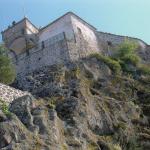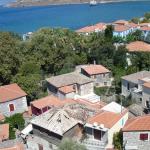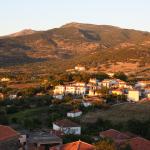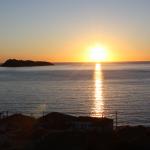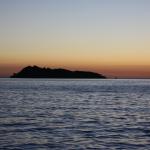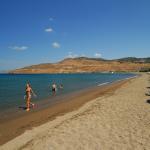Petra - Anaxos - Stipsi
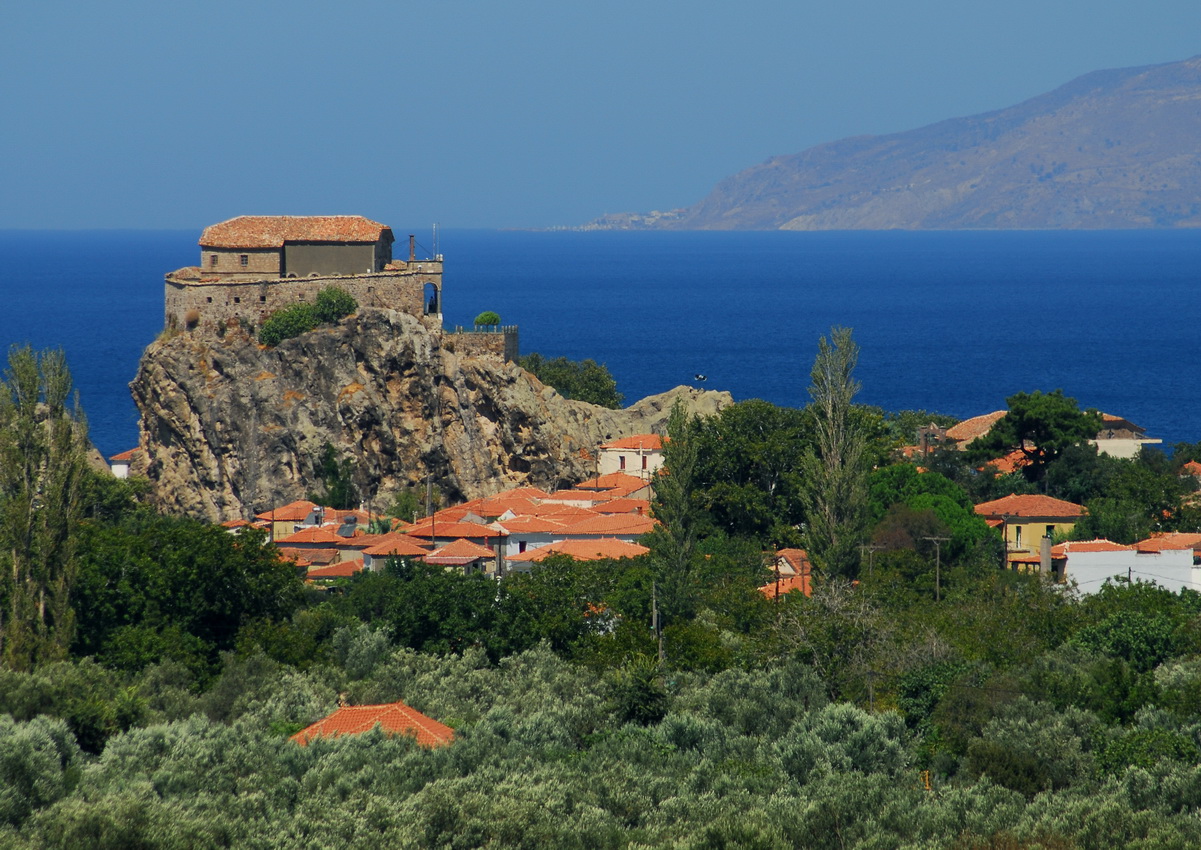
On the northwest side of the island you’ll find Petra, Skoutaro, Lafiona, and the settlements of Petri and Anaxos, traditional villages with stone houses, running waters and lush vegetation. The region is filled with silvery olive trees, and forests of pine, oak, cypress, and fruit trees. These are mountainous as well as coastal resort destinations with gorgeous sandy beaches.
Petra
This traditional village is located just 55 klm from Mytilene. The birthplace of many notables in the arts and letters, such as Thrasyvoulos Stavrou, Neoklis Kazazis, Takis Eleftheriadis, Orestis Kanellis, et al, it’s well known today for its active Cultural Center and its library housed in the neoclassical stone building of the former Girls’ Academy.
Petra has a marvelous sandy beach with hotels, rooms, colorful tavernas, trendy bars, and restaurants. It’s a lively place, day and night, and perfect for family holidays. Organized beaches in scenic bays provide umbrellas and lounges, beach-side service and water sports. Beautiful stone mansions with gardens filled with jasmine, palm trees and fruit trees give the village a particular elegance.
Petra is especially popular with painters, writers and poets, and its old landed gentry add a note of nobility. This was the birthplace of painter Orestes Kanellis. The family of the naïf painter Niki Eleftheriadi owns an excellent private collection of Çanakkale pottery – but it is not yet open to the public. The market district of Petra is very picturesque with little shops perfect for browsing and souvenir hunting.
The Islets of Petra
Opposite Petra are three uninhabited islets, a paradise for birds and small animals. Ai Yiorgi, the “rabbit island,” is a wildlife reserve. These islands operate as ecological observatories and are a stopping place for small craft and spear-fishers. If you want to escape the crowds, rent a peddle-boat and head here to splash around at your heart’s content.
Kavaki
This is the beautiful leeward cove at the right end of the beach. On your way there, enjoy a dip at the beach bars that have sprung up in recent years and offer shady straw umbrellas and comfortable bamboo lounges in a stylish environment.
Panagia tis Petras (Our Lady of the Rock)
The center of the village is dominated by the rock on top of which is the Church of Panagia tis Glykofilousas (Our Lady of the Sweet Kisses). The rock is enormous, as imposing as those of Meteora in central Greece. At a height of 40 meters, it sprouts out of the tall, slender poplars as though wishing to dominate the level landscape around it. Climb the 114 steps to the top for a breath of Aeolian air and a view of the surrounding hills and blue waters. As prominent as a fortress, the church is a triple-aisled basilica with a narthex, a superb carved wooden bishop’s throne and a well with “holy water.” There are many legends surrounding the finding of the icon of the Virgin and the construction of the church. Ask the locals to tell you about it.
The Church of Agios Nikolaos
This important ecclesiastical monument is located near the village square. It is a single-aisled basilica with three layers of frescos, the oldest of which is believed to be from the 16th century. It also maintains a museum.
The House of Vareltzidaina
You’ll find the House of Vareltzidaina a short distance from the square, practically abutting the Rock of Our Lady. Dating from the turn of the 18th-19th centuries, it is built in the Lesbian architectural style of the late Ottoman Empire: a marriage of oriental elements with neoclassical, Byzantine and baroque architecture.
Churches in the Area
While you are in the area, several other churches are well worth visiting: the Church of the Assumption (1880) in Skoutaro; the Church of the Taxiarch (1807) in Ypsilometopo; the Church of the Assumption (1807) in Lafiona; and the Church of the Assumption (1805) in Stypsi.
Historical Trail
In the mountains north of Petra there is an abandoned little village called Klapados, which was the site of the final victorious battles of the Greek militia against the Turks for the liberation of Lesvos in December 1912. From there you can set out on an enchanting hike through a beautiful public pine forest. Along the way you’ll enjoy stupendous bird’s-eye views of the villages of Anaxos, Petra, Mithymna, Eftalou and Skamnia in all their glory.
Petri
On the way up to the settlement of Petri, with its 15 stone windmills to its east, you’ll come across a boulder with a large hole in its center. This, legend has it, is where Achilles moored his ship during the Trojan War. Nearby is a cistern with a spring, known as the Spring of Achilles (Achillopigada). This little hamlet offers a spectacular sunset with the sun disappearing into the sea. Sit on the lofty balcony of the little taverna, which is open all year, and you’ll be enchanted by the view, not to mention the atmosphere of the place and its marvelous traditional dishes.
Anaxos
Heading northwest from Petra you’ll come to Anaxos, one of the island’s most beautiful beaches with deep clear water and a little stream at its western end. It has a very well organized beachfront that developed over the past few decades, before there was even a settlement here. Its unique hilly landscape attracts many tourists, even those on limited budgets. Each summer many foreign visitors discover their inner selves in the company of the sea and friendly atmosphere. It’s a great place for families too.
Stypsi
Located in the mountains, this traditional “hanging” village has two churches and the rock of Ai Yiorgi. With tavernas in the square serving scrumptious meat dishes and mezes, it’s the perfect choice, winter or summer alike. The view of Petra is striking and the Ligonas ravine, with 20 abandoned watermills, holly-oaks, pear trees, wild shrubbery and ancient cobbled path, is unbeatable for walking.
Ypsilometopo
This verdant little village is located farther west on the north coast of the island. It is filled with plum trees and faces the large plain of Kalloni.

